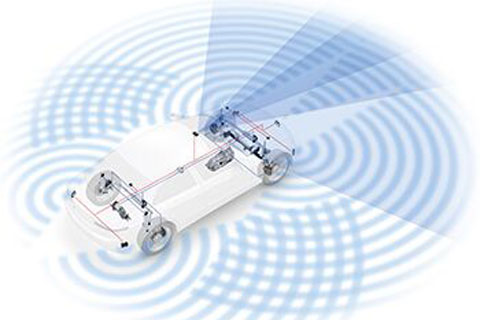
Today, there are two different options available in the market for 3D Mapping, Lidar Laser and Photogrammetry. The parameters and use conditions differ with different products. A couple of years ago, the introduction of laser sensing and computation anticipated a change in the technology. At that time, these two new technologies caused rapid development with each other. Then the question generated is which one should we choose: LiDAR Sensing Vs. Photogrammetry and which is better?
This post reviewed and compared LiDAR (Light Detection and Ranging) & Photogrammetry to help you to choose which one is better for your project.

When it comes to choosing the right laser sensing system for detailed mapping, there are two main types to choose from LiDAR and Photogrammetry. Both have unique benefits that can make them better suited for different applications. Here is a quick overview of each type to help you choose the right one for your needs.
Lidar laser sensing uses an active laser to bounce light off of objects and create a 3D map of the environment. This type of system is very accurate and can create very detailed maps. However, it is also more expensive and requires more power than photogrammetry laser sensing due to its efficiency and accuracy.
Photogrammetry laser sensing uses a passive infrared sensor to detect the reflections of an external light source. This type of system is less expensive and requires less power than lidar laser sensing, but it is not as accurate and can only create relatively low-resolution maps.
When it comes to choosing between lidar and Photogrammetry for 3D mapping, there are a few key advantages that each technology offers. As we have seen, lidar laser sensing is more accurate and precise, while photogrammetry is less expensive and easier to use. Here’s a closer look at the benefits of each:
1) More accurate measurements: Lidar sensors emit thousands of laser pulses per second, and each pulse reflects off objects in the environment to create a 3D point cloud. This high density of data points allows for a very accurate measurement of distance and position.
2) Precise mapping: Lidar systems can produce maps with incredible detail, down to individual leaves on trees or small stones on the ground.
3) Wide range of applications: Lidar can be used for a variety of applications including topographic mapping, archaeological surveys, crime scene reconstruction, and more.
1) Inexpensive: Photogrammetry systems are much cheaper than lidar systems, making them a good choice for projects with limited budgets.
2) Easy to use: Photogrammetry is simple to set up and use, even for users with no prior experience.
When it comes to LiDAR sensing and photogrammetry, there are a few key differences that you should be aware of. Firstly, lidar laser sensing is generally considered to be a more accurate technology, while photogrammetry is more useful for small projects. Second, LiDAR sensing requires a higher initial investment, while photogrammetry is more affordable in the long run. Finally, LiDAR typically takes longer to set up and map an area, while Photogrammetry can be done relatively quickly.
When it comes to choosing between lidar laser and photogrammetry sensors for 3D mapping, there are a few key factors to consider. Cost is often the most important factor, as lidar sensors can be quite expensive. Accuracy is also important, as you want your maps to be as precise as possible. Finally, you’ll need to decide what sort of application you’ll be using the sensor for. If you need to map large areas quickly and need more detailed data, lidar is the way to go. If you are working in a confined space, Photogrammetry may be a better option.
Lidar laser and Photogrammetry both have their pros and cons, so it depends on your specific needs as to which one you should choose. If you need a high degree of accuracy and detail, then lidar is probably your best bet. But if you’re working with a tight budget, then photogrammetry might be the way to go. InPhenix is your ideal choice for mapping purposes and provides the user with an advanced, yet uncomplicated, solution for 3D mapping.
Inphenix is an ISO 9001:2015 certified designs and manufacturer of lasers and light sources that are critical in state-of-the-art applications in the medical, telecom, sensing and measurement industries. We have 100,000 square foot facility in Livermore, California. Contact us to learn more about our products.
